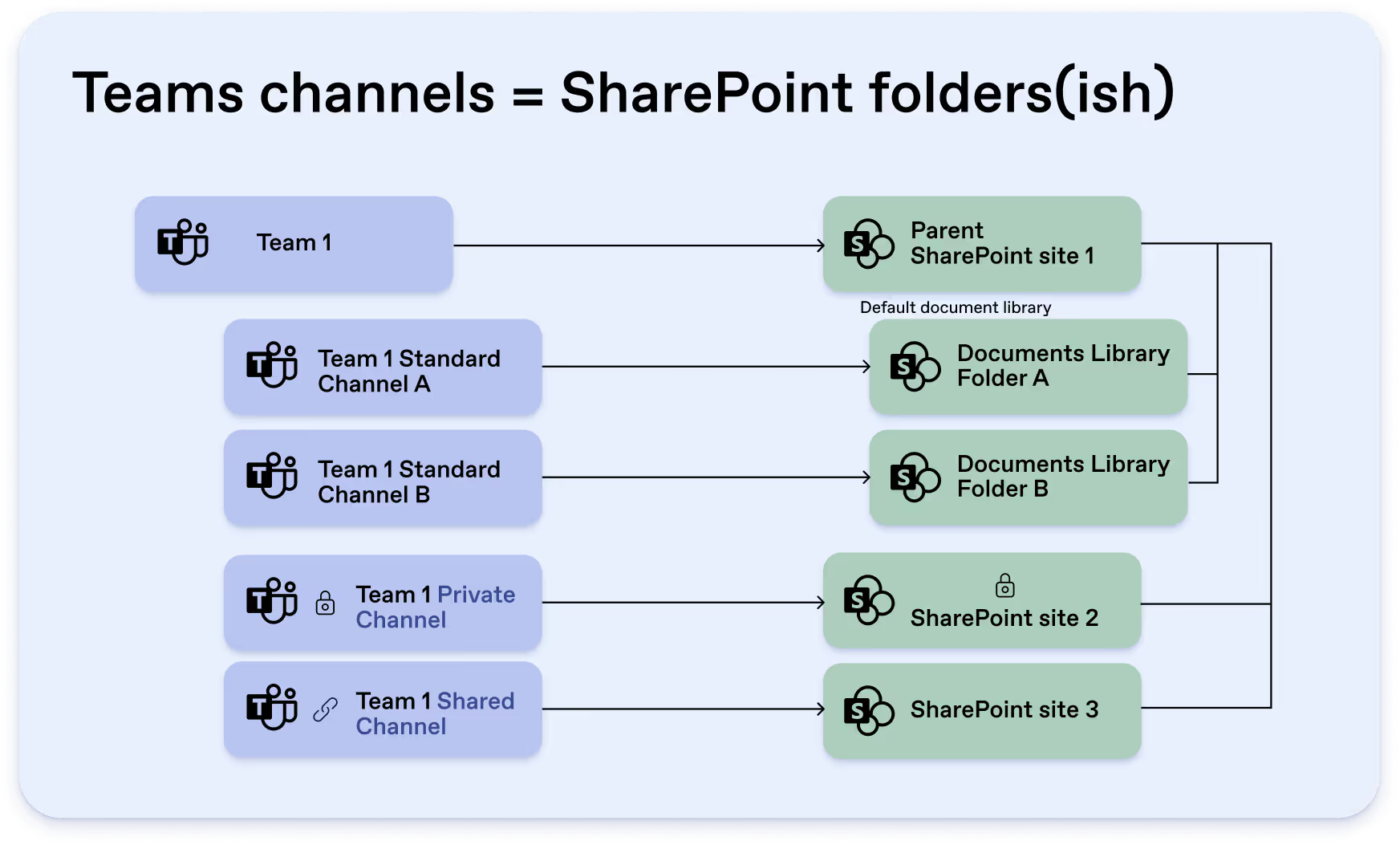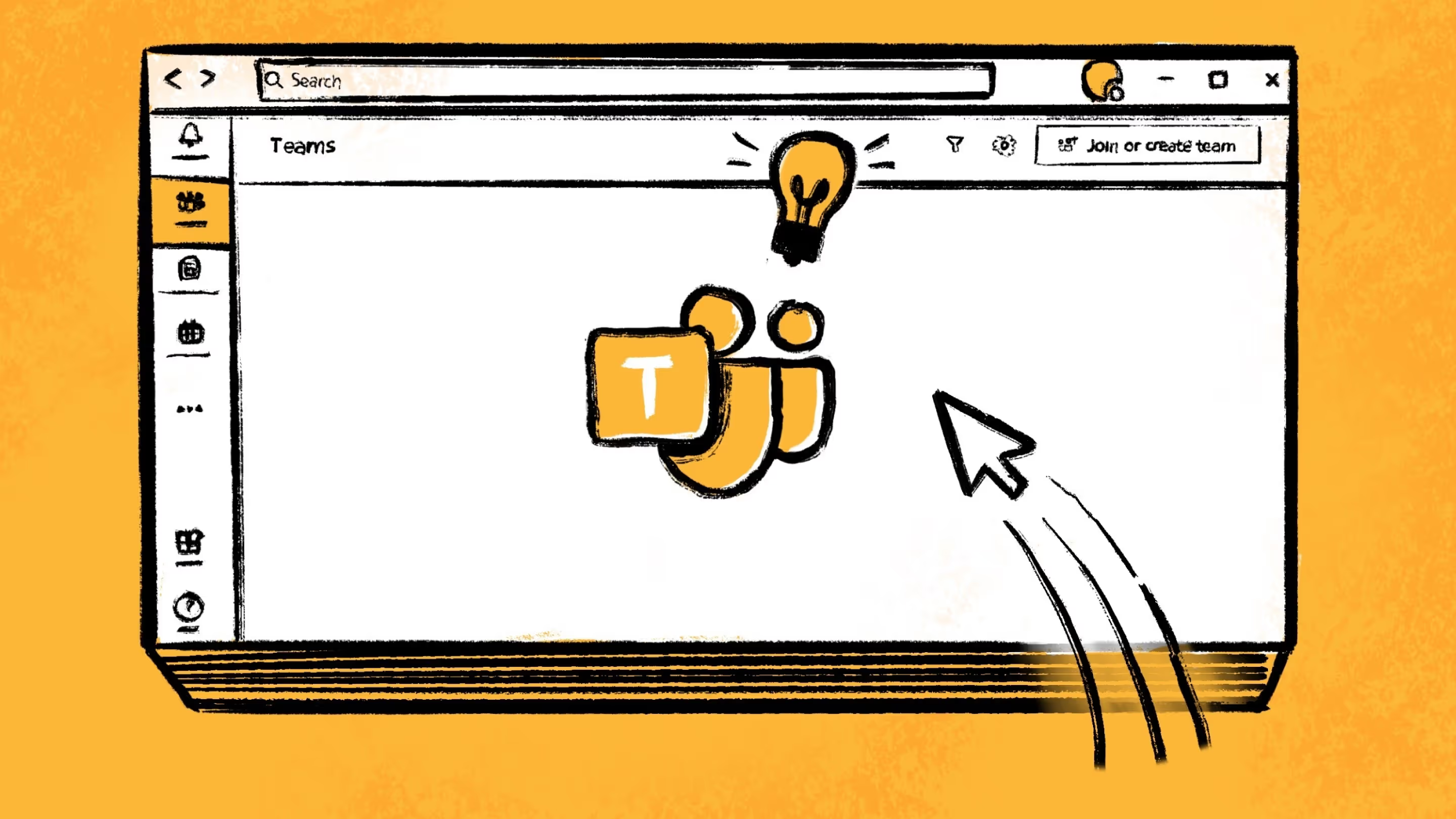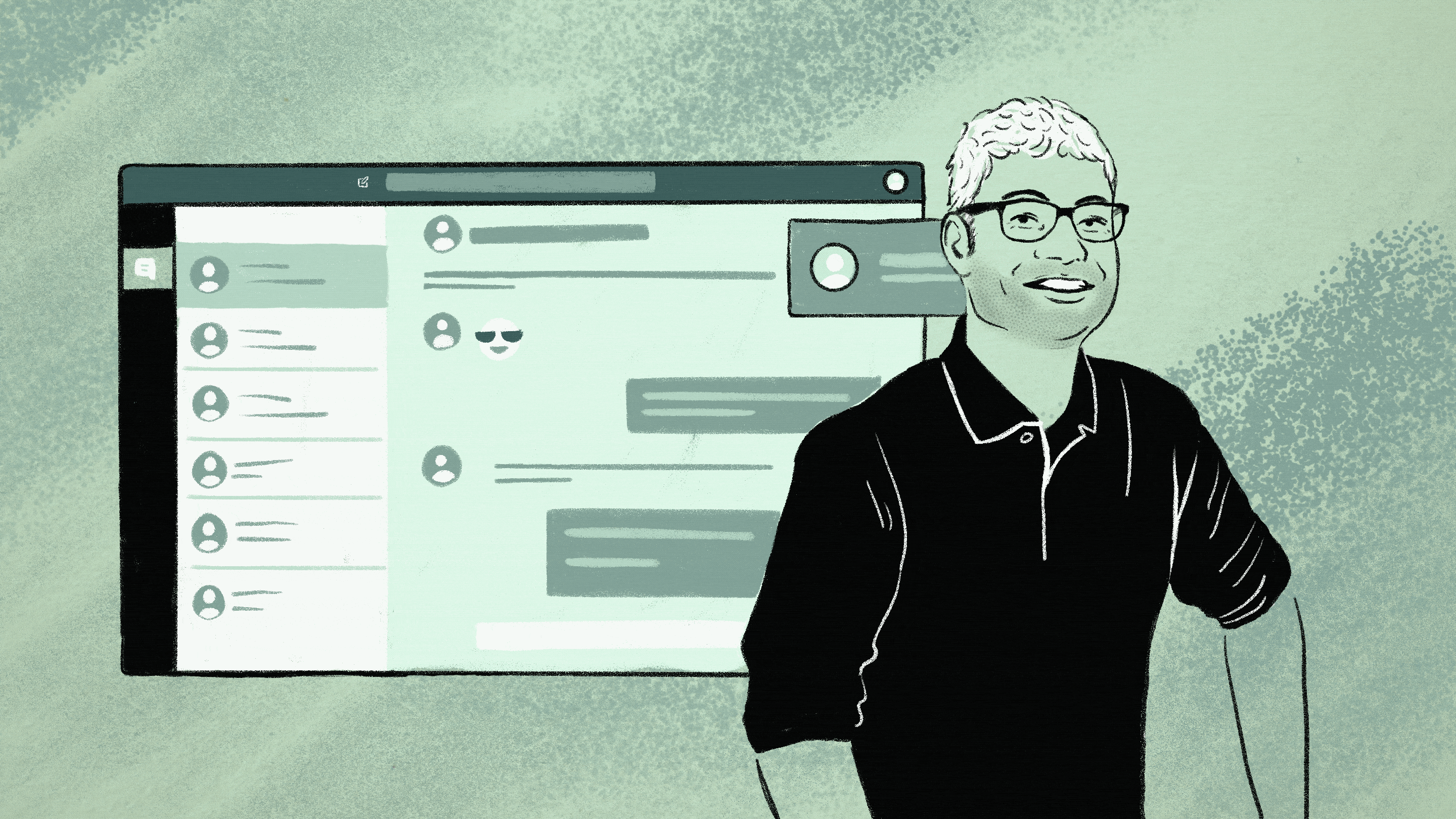Bridge the gap between your SharePoint sites and Microsoft Teams

Table of contents
Microsoft MVP Susan Hanley (@susanhanley) explains how SharePoint sites work with Microsoft Teams and shares tips to help make your journey from SharePoint to Teams a breeze for your end users.
For many users today, the connection between Microsoft Teams and SharePoint stirs up a lot of questions. One particular reason is the lack of awareness of how both these Microsoft products work together.
You could be a SharePoint-first company already familiar with how to use SharePoint, but not Teams. Or, you could be a Teams-first company just getting up to speed on how to use SharePoint.
Whatever background you might be approaching this from, understanding the connection can be quite confusing for admins and end users alike.
According to Microsoft MVP Susan Hanley, you shouldn’t feel bad about being in this situation. The SharePoint-Teams connection is rarely discussed. As a result, some misconceptions have sprung up.
To set the record straight once and for all, Susan Hanley joined us for a discussion as part of our Pass the Mic webinar series.
Watch the webinar or read through our recap of Susan’s key points and Q&A from the webinar.

How the SharePoint-Teams connection became the source of confusion
SharePoint’s been around for about 20 years now. Over this time span, it’s safe to say it has built up its own dedicated user base. But with Teams, a Microsoft product that’s about five years old, we’ve only really seen it gain traction after the global pandemic.
Because most workplaces had no choice but to go remote during the beginning of the pandemic, rapid deployment of Teams became a necessity. Today, Teams is an essential part of the Microsoft product family.
But when SharePoint users look to deploy Teams, several questions come to mind:
- Where do I find my files, SharePoint or Teams?
- Where do I store my files?
- Where exactly IS my file?
I wish I had a dollar for every time I was asked, ‘Should I put things in Teams or should I put them in SharePoint?’
Susan Hanley, Microsoft MVP
Of course, the questions don’t simply stop at file storage. Let’s look at the SharePoint-Teams connection in its entirety.
Along the way, we’ll clear up many general confusions and misconceptions regarding this connection.
Explaining the SharePoint-Teams connection to your end users
Are you a SharePoint-first organization or a Teams-first organization? To understand the SharePoint-Teams connection, we need to first acknowledge your background.
- SharePoint-first users face more confusion than Teams-first organizations. It’s important to acknowledge that all Teams files are stored in SharePoint. The two apps work seamlessly together. For example, files and folders visible in a team’s Files tab are actually stored in the team’s associated SharePoint site.
- For Teams-first users looking to deploy SharePoint, the process might be relatively less complicated. But, general confusion about where the files are being stored remains.
In this clip, Susan Hanley explains the SharePoint-Teams connection.
So, to recap:
Teams is:
- A chat tool, first and foremost.
- A hub of productivity, representing a new way of collaborating.
Teams is not:
- A place to store files. The files you see stored in the Files tab aren’t stored there. The Files tab shows your team’s files that are stored on your team’s team site in SharePoint.
Good to know:
- When you create a team, a corresponding SharePoint site is created for you.
- For every channel you create in Teams, a folder is created in the default document library on the corresponding SharePoint team site.
- Each private channel and each shared channel have their own SharePoint site. The separate site is required to ensure access to private or shared channel files and is restricted to only members of the private or shared channel. These sites are created with a document library by default.

Plan your SharePoint-to-Teams journey from different places
Your transition from SharePoint to Teams begins based on your current setup.
- In the cloud, modern sites with Microsoft 365 Groups: Connect a SharePoint site to a team in Microsoft Teams (“teamify”)
- In the cloud with classic sites: Connect current SharePoint sites to Microsoft 365 Groups (“groupify”), and then teamify.
- On-premises with classic sites: Flatten your existing hierarchies (promote subsites to top-level site collections) before you teamify or groupify. Then, migrate to the cloud.
👉 ShareGate makes it easy to take your site architecture from top-down to flat in order to enable powerful collaboration features in Microsoft 365. ShareGate’s ‘Promote’ feature enables your existing subsites to benefit from modern workloads in Microsoft 365 in just a few clicks.
Create topic-based channels in Microsoft Teams
At the core of the Microsoft Teams app are team channels—that’s where most of the action takes place.
- Every team starts with a General channel. Use this channel as the name implies—to discuss general topics related to the team’s purpose.
- For every other topic—i.e. Projects—create a new channel. It’s an efficient way to bundle all related content into one location.
According to Susan Hanley, a good way to get started in Teams —no matter where you’re starting your SharePoint-to-Teams journey from—is to organize all the topics that your team discusses and create a separate channel for each of them. Work with your team to decide how you want to use the General channel (e.g., for announcements and topics that don’t fit other channels).
Review your existing SharePoint files
Cleaning up files that are no longer being used or relevant is a vital best practice. An organized environment will make it a lot easier for your end users to find what they’re looking for. If you’re unsure about certain files that may or may not be required later, consider archiving these documents in the team site associated with your Teams team – in a separate document library.
Data security during OneDrive and SharePoint migrations is crucial. Explore our blog to understand the best strategies for preserving data integrity and confidentiality throughout the tenant-to-tenant migration process.
Map existing content to your channels
Think about how you want to map your existing content to the channels you want to create in Teams.
- See if you can map existing folders in your document library to a channel.
- Use the SharePoint app to create a new library in which to move inactive files. You can add the library as a tab in your General channel.
Understand SharePoint vs. Teams concepts
As an IT admin, you might have some questions in your journey from SharePoint to Teams.
Do I need a new team in Microsoft Teams? Or, do I create a channel in a team?
In this clip, Susan Hanley explains SharePoint vs. Teams concepts.
In order to answer questions like these, you need to have a clear understanding of your business requirements. Here are a couple of scenarios and recommended approaches that work best in each specific case.
Source: Susan Hanley, Microsoft MVP
Good to know:
- Teams will re-name corresponding SharePoint folders automatically when you change the name of a channel in Teams.
- When you rename a channel in Teams, the new folder name will only be updated in the corresponding OneDrive if the entire document library has been synced.
Teams channels vs. Teams meetings
Private channels are great for connecting a team. Shared channels enable collaboration inside and outside your organization. Let’s take a look at some key differences between the two and the kinds of meetings you can have in Teams.
Channels
Private channels
- You must be a member of a team in Microsoft Teams to be added to a private channel. Same goes for guests.
- Non-guest team owners and team members can automatically create a private channel.
- You can add up to 30 members per team and up to 250 members per private channel.
- Site permissions for a private channel can’t be managed independently through SharePoint.
- Currently, you can’t schedule channel meetings in private channels.
Shared channels
- Members of a shared channel don’t have to be members of the team in Microsoft Teams.
- You can share channels with up to 50 team members and as many organizations as needed.
- Schedule a meeting and collaborate in real-time on apps.
Meetings
Channel meetings
- Channel meetings can only be scheduled from Teams
- Everyone can see the channel meeting and join if required, even if they’re not specifically invited
- No chat, transcript, or meeting recording is available for people not part of the team
- All your recordings are automatically stored in the Files tab for the channel in a folder named ‘Recordings’
Standard meetings
- Only invited members can participate in standard meetings
- Chat, transcript, and recording are available to all members in the meeting.
- The recording is stored in the personal OneDrive of the person who starts the meeting.
- Standard meetings don’t show up on a channel calendar.
Tips to help your SharePoint users transition to Microsoft Teams
Start in Teams, and SharePoint will follow. To ease the transition process for your end users, you can bring SharePoint into Teams by adding your existing SharePoint pages as tabs in Teams (in other words, pages from your sites that you have “teamified”). This way, you’ll be able to see all the content you need from that legacy SharePoint site.
Start in Teams, and SharePoint will follow.
You can also show users how to navigate from SharePoint to Teams and back. Fortunately, both SharePoint and Teams offer built-in features to make navigation easier.
The channel-connected folders in SharePoint can help you get to Teams:

The channel Files tab in Teams can help you get to SharePoint:

Your users can discover their files in channels and the site library within SharePoint by clicking on Documents. They can even switch between libraries by clicking on the document library dropdown menu, helping them to quickly navigate to other libraries.

It’s also a good idea to explain to your end users what happens when you attach a file in a Teams chat.
- Files attached within a 1:1 or group chat are automatically stored in your OneDrive
- Files attached within a Teams channel are stored in the corresponding SharePoint folder for the Teams channel
Key takeaways
Whether you’re just starting out on your journey from SharePoint to Teams or looking to get up to speed on management best practices, these five high-level points are a good place to start:
- Identify your team sites in SharePoint that don’t have a connected team in Microsoft Teams.
- If there’s a team, move the files from your legacy SharePoint site to the modern site associated with that team, then delete the legacy site.
- If you decide to connect a SharePoint site to a team in Microsoft Teams (“teamify”), make sure to do some planning. If you have classic sites in the cloud, connect them to Microsoft 365 Groups (“groupify”), then “teamify”.
- If you’re on-premises, make sure you have a plan in place before a Teams deployment, clean up legacy content, then migrate.
- Help your end users understand the connections between SharePoint and Teams to speed up adoption.
Q&A
Should you use folders in Teams?
Actually, you should! When you create a channel in Teams, you automatically get a folder in SharePoint. Just try to avoid nested folders (folders within folders). If your folder structure gets too deep, it will be much harder to find files and you could end up with a URL that is too long for a link. Try to make no more than one or two levels of folders within your Teams channel folders.
What does “teamify” mean?
Teamify means connecting your existing SharePoint site to Microsoft Teams.
Behind every team created in Microsoft Teams, there’s a SharePoint site powered by a Microsoft 365 group. This SharePoint site is based on the modern experience in SharePoint Online, and the document library contains folders that are connected to the channels in the corresponding team.
When you teamify, the SharePoint site gains access to all of the functionality of Microsoft Teams. The concept of “Teamify” mostly goes hand in hand with other concepts such as “groupify.” Check out our article to learn more about these concepts and how ShareGate makes it easy to teamify existing subsites and groupify in just a few click.
What is a shared channel in Microsoft Teams?
A shared channel is a type of channel in Microsoft Teams. This feature allows members of a team to collaborate with anyone inside and outside your team or organization without requiring that member to switch Teams or tenants to participate in the team. Both parties need to be on Teams. If you invite a guest who doesn’t have Teams installed, they won’t be able to join the shared channel.
To learn how to get started with Teams shared channels, check out our MVP article on the topic.
How do you guide users on when to create a team or a SharePoint site?
Explain to them that for each team created in Microsoft Teams, a SharePoint site is automatically created. This site is where the team’s files are stored, including the files they see on the Files tab in a team.
ShareGate is a Microsoft 365 management solution that can help you save time and streamline everyday Teams and SharePoint operations.
Manage permissions, metadata, and file structure in one convenient place. Get the visibility you need in your environments, run pre-built and custom reports, and close security gaps. And effortlessly modernize your classic SharePoint sites to leverage collaboration tools like Microsoft Teams and Microsoft 365 Groups.
Take ShareGate for a spin with a free trial!
.jpg)


.svg)
.avif)
%20(1).avif)












.jpg)


.png)

